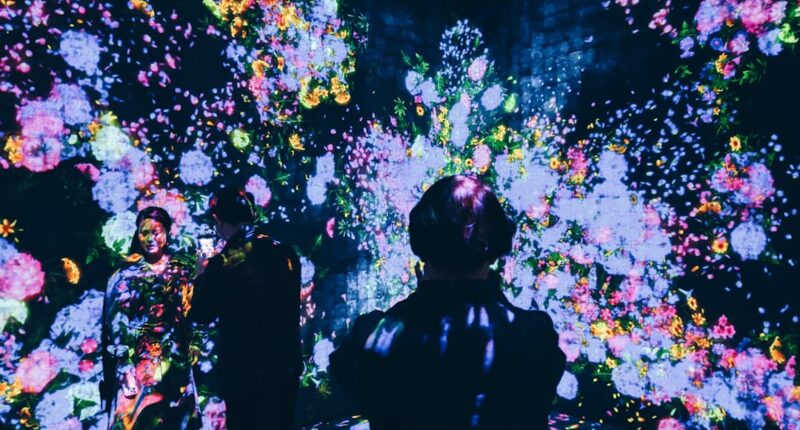Non-fungible tokens (NFTs) have taken the digital world by storm, but where did they come from? NFTs are a type of digital asset that represent ownership or proof of authenticity of a unique item or piece of content using blockchain technology. The concept of NFTs can be traced back to the creation of the Ethereum blockchain, which introduced the ability to create and manage smart contracts. These smart contracts allowed for the creation of unique tokens that could be used to represent digital assets. In 2017, the first NFT standard, known as ERC-721, was introduced on the Ethereum blockchain, paving the way for the explosion of NFTs in the years to come.
The rise of NFTs can also be attributed to the growing interest in digital art and collectibles. As more artists and creators began to explore the potential of blockchain technology, NFTs emerged as a way to authenticate and monetize digital creations. The ability to prove ownership and scarcity of digital assets through NFTs has revolutionized the way we perceive and trade digital content. With the rise of NFT marketplaces and platforms, such as OpenSea and Rarible, NFTs have become more accessible to a wider audience, fueling their popularity and mainstream adoption.
The Evolution of NFTs: From Digital Art to Collectibles
The evolution of NFTs has seen them transition from being primarily associated with digital art to encompassing a wide range of collectibles and assets. Initially, NFTs gained traction in the art world as a way for digital artists to authenticate and sell their work in a secure and transparent manner. This led to a surge in digital art sales, with some NFT artworks fetching millions of dollars at auctions. However, the scope of NFTs has expanded beyond art to include other digital assets such as virtual real estate, domain names, and even tweets.
One of the most notable examples of this evolution is the emergence of NFT-based gaming and virtual worlds. NFTs have enabled gamers to truly own and trade in-game assets, blurring the lines between virtual and real-world economies. Virtual real estate in platforms like Decentraland and The Sandbox has become highly sought after, with users investing in digital land and properties using NFTs. Additionally, NFTs have also been used to tokenize sports memorabilia, music rights, and even iconic moments in history, further diversifying the use cases for non-fungible tokens.
NFT Artists: How Creators are Embracing Non-Fungible Tokens
NFTs have opened up new opportunities for artists and creators to monetize their work and engage with their audience in innovative ways. By leveraging blockchain technology, artists can create and sell limited edition digital artworks as NFTs, allowing them to retain ownership and control over their creations. This has empowered artists to bypass traditional gatekeepers and directly connect with collectors and fans in a decentralized marketplace. Moreover, the programmable nature of NFTs enables artists to earn royalties on secondary sales, ensuring a continuous stream of income from their work.
Many artists have embraced NFTs as a means of experimentation and self-expression, pushing the boundaries of what is possible in the digital art space. From interactive multimedia installations to generative art and virtual reality experiences, NFT artists are constantly exploring new mediums and formats to engage their audience. The community-driven nature of NFT platforms has also fostered collaboration and networking among artists, leading to the formation of collectives and collaborations that further elevate the visibility and impact of NFT art.
NFT Jobs: Exploring Career Opportunities in the NFT Industry
| Job Title | Skills Required | Average Salary |
|---|---|---|
| NFT Developer | Blockchain development, smart contracts, NFT standards | 80,000 – 150,000 |
| NFT Marketing Specialist | Digital marketing, NFT promotion, community engagement | 60,000 – 100,000 |
| NFT Artist | Digital art creation, NFT platforms, copyright knowledge | 40,000 – 80,000 |
| NFT Project Manager | Project management, NFT industry knowledge, team coordination | 70,000 – 120,000 |
The rapid growth of the NFT industry has created a demand for various roles and skill sets across different sectors. From artists and developers to marketers and legal experts, there are numerous career opportunities emerging in the NFT space. For artists, NFTs offer a new avenue for monetizing their work and building a sustainable career in the digital art world. With the rise of virtual galleries and online exhibitions, there is a growing need for curators and art professionals who can navigate the intersection of art and technology.
On the technical side, blockchain developers and smart contract engineers are in high demand as companies and platforms continue to innovate and expand their NFT offerings. Additionally, marketing and community management roles are crucial for promoting NFT projects and engaging with collectors and enthusiasts. As the regulatory landscape around NFTs evolves, legal experts specializing in intellectual property rights and blockchain law will play a vital role in shaping industry standards and best practices. Overall, the diverse range of career opportunities in the NFT industry reflects its multidisciplinary nature and potential for long-term growth.
NFT News: Staying Updated on the Latest Developments in the NFT Market
Staying informed about the latest developments in the NFT market is essential for anyone looking to participate in or understand the industry. With new projects, partnerships, and trends emerging on a daily basis, keeping up with NFT news can provide valuable insights into market dynamics and investment opportunities. Platforms like CoinDesk, Decrypt, and The Block regularly cover NFT-related topics, offering in-depth analysis and commentary on market trends and industry developments.
In addition to news outlets, following key influencers and thought leaders in the NFT space can provide valuable perspectives and insider knowledge on upcoming projects and market movements. Social media platforms like Twitter and Discord have become hubs for NFT communities, where enthusiasts can engage in discussions, share insights, and stay updated on the latest news. Furthermore, attending industry events and conferences dedicated to blockchain technology and digital art can offer firsthand exposure to new ideas and innovations shaping the future of NFTs.
The Impact of NFTs: How Non-Fungible Tokens are Reshaping the Art World

The impact of NFTs on the art world has been profound, challenging traditional notions of ownership, value, and authenticity. By enabling artists to tokenize their work as unique digital assets, NFTs have democratized access to art ownership while providing creators with a direct channel for monetization. This has led to a redefinition of what constitutes art, as digital creations gain recognition and value within the broader art market. Moreover, NFTs have facilitated a shift towards more inclusive and diverse artistic expressions, empowering underrepresented voices to thrive in the digital art space.
Furthermore, NFTs have sparked conversations around copyright laws, intellectual property rights, and provenance in the digital age. As artists explore new ways to leverage blockchain technology for authentication and royalties, legal frameworks are being reexamined to accommodate these novel forms of ownership and distribution. Additionally, the rise of virtual galleries and metaverse experiences has reimagined how art is exhibited and experienced, transcending physical limitations and geographical boundaries. The immersive nature of NFT art has also opened up opportunities for collaboration between artists, technologists, and collectors, fostering a dynamic ecosystem that continues to evolve.
The Future of NFTs: Predicting Trends and Innovations in Non-Fungible Tokens
Looking ahead, the future of NFTs holds exciting possibilities for further innovation and adoption across various industries. As blockchain technology continues to mature, we can expect improvements in scalability, interoperability, and sustainability that will enhance the functionality and accessibility of NFTs. This may lead to new use cases for non-fungible tokens beyond art and collectibles, such as tokenizing real-world assets like real estate or intellectual property rights.
Moreover, advancements in augmented reality (AR) and virtual reality (VR) technologies are likely to converge with NFTs, creating immersive experiences that bridge the physical and digital realms. This could revolutionize how we interact with art, enabling new forms of storytelling and interactive narratives that transcend traditional mediums. Additionally, as more industries embrace tokenization and decentralized finance (DeFi) applications, we may see increased integration of NFTs into financial products and investment vehicles.
In conclusion, non-fungible tokens have emerged as a transformative force in the digital landscape, reshaping how we create, consume, and interact with content. The evolution of NFTs from their origins in digital art to encompassing a wide range of assets reflects their potential to redefine ownership and value in a decentralized economy. As the industry continues to evolve, staying informed about the latest trends and developments will be crucial for navigating this dynamic landscape and unlocking new opportunities for creators, collectors, and enthusiasts alike.
If you’re curious about the origins of NFTs and how they have evolved over time, you may want to check out this article on nft-jobs.com. This article delves into the history of NFTs and provides insight into when they first started gaining traction in the digital art world. It’s a fascinating read for anyone interested in learning more about the rise of NFTs and their impact on the creative industry.
FAQs
What are NFTs?
NFTs, or non-fungible tokens, are digital assets that represent ownership or proof of authenticity of a unique item or piece of content, such as artwork, music, videos, and other digital files.
When did NFTs start?
NFTs first gained popularity in 2017 with the launch of CryptoKitties, a blockchain-based game that allowed users to buy, sell, and breed virtual cats. However, the concept of NFTs dates back to the creation of the ERC-721 standard on the Ethereum blockchain in 2015.
How do NFTs work?
NFTs are created, bought, and sold on blockchain platforms, such as Ethereum, using smart contracts. Each NFT is unique and has a distinct digital signature that verifies its ownership and authenticity.
What is the significance of NFTs?
NFTs have revolutionized the way digital assets are bought, sold, and owned. They provide a way for creators to monetize their digital work and for collectors to own and trade unique digital items.
What are some popular examples of NFTs?
Some popular examples of NFTs include digital artworks by Beeple, the first tweet by Jack Dorsey, virtual real estate in decentralized virtual worlds like Decentraland and The Sandbox, and NBA Top Shot collectible basketball highlights.





